

In this post, I offer tips for teaching students phoneme-grapheme correspondence and explain how a sound wall can support this instruction. Then, I leave you with a free grapheme frequency chart that tells you what graphemes to teach for each phoneme.
One of the first literacy skills students develop is the ability to match the phonemes (speech sounds) they hear with the graphemes (letters and letter combinations) they see. This skill is referred to as phoneme-grapheme correspondence and it is an essential skill for beginning readers.
A sound wall is an instructional tool you can use to explicitly and systematically teach students phoneme-grapheme correspondences. Recently, I have shared a lot about the science of sound walls and their benefits. I hear from many teachers who have had great success using one and also receive lots of questions from teachers who are eager to learn more.
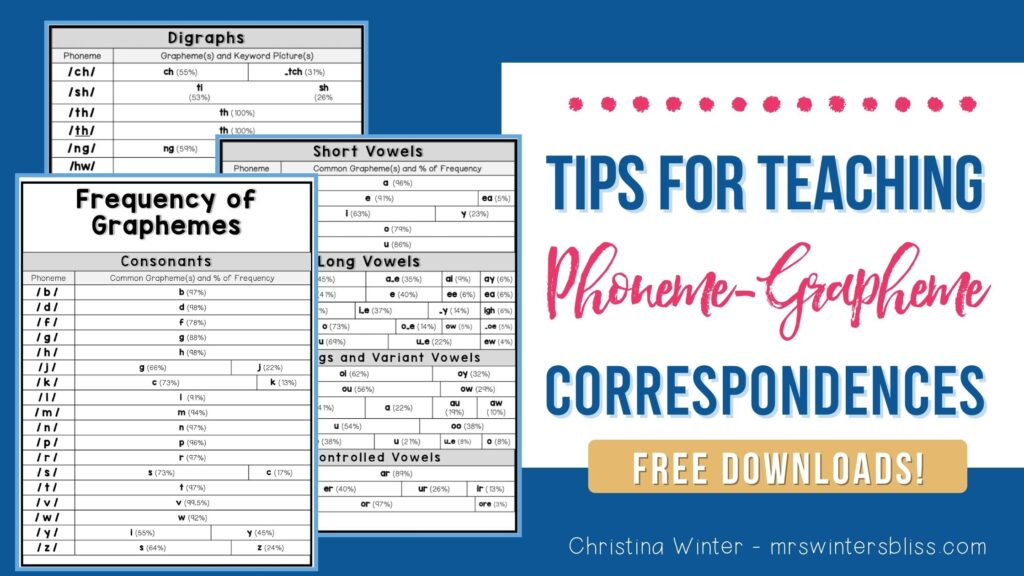
Today I want to help you better understand how a sound wall can be an effective tool in helping students master letter-sound relationships. I will define the terms phoneme and grapheme and share tips for teaching phoneme-grapheme correspondences. Finally, I will leave you a free grapheme frequency chart to help guide your instruction.
What is a Phoneme?
A phoneme is the smallest unit of sound that can convey a unique meaning. For example, /c/ /a/ /t/ are the 3 phonemes we hear in the word ‘cat’. When we change just one of those phonemes (/c/ to /r/) ‘cat’ becomes ‘rat’ and the meaning has changed.
Each language has its own set of phonemes. Generally, it is agreed upon that English has 44 sounds. You may come across lists with more or less due to accents, dialects, and the evolution of the language itself. You can read more about phonemes and download a list of the 44 phonemes here.
What is a Grapheme?
A grapheme is a letter or group of letters that represent a phoneme. Graphemes are the letters that spell a sound in a word.
There are four types of graphemes:
1. Single letter graphemes. Ex: t, b, p
2. Digraphs (two letters that make one sound). Ex: ch, sh, th
3. Trigraphs (three letters that make one sound) Ex: -igh, -dge
4. Quadgraph or Tetragraph (4 letters that make one sound) Ex: -augh, -ough, -eigh
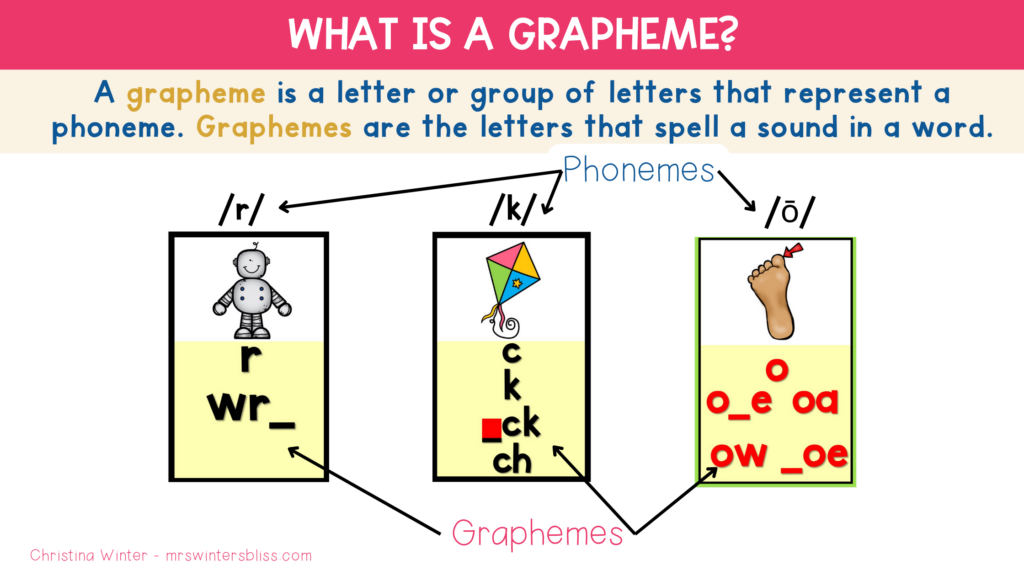
A sound wall is an instructional tool that matches phonemes to the graphemes that represent those sounds. It allows you to teach letter-sound relationships explicitly and in isolation and offers students daily practice with new sound-letter relationships, as well as cumulative review of previously taught relationships. You can learn more about the benefits of using a sound wall here.
The Sequence to Teach Phoneme-Grapheme Correspondences
The order in which you introduce new phoneme-grapheme correspondences should be based on your school’s scope and sequence for foundational skills in reading.
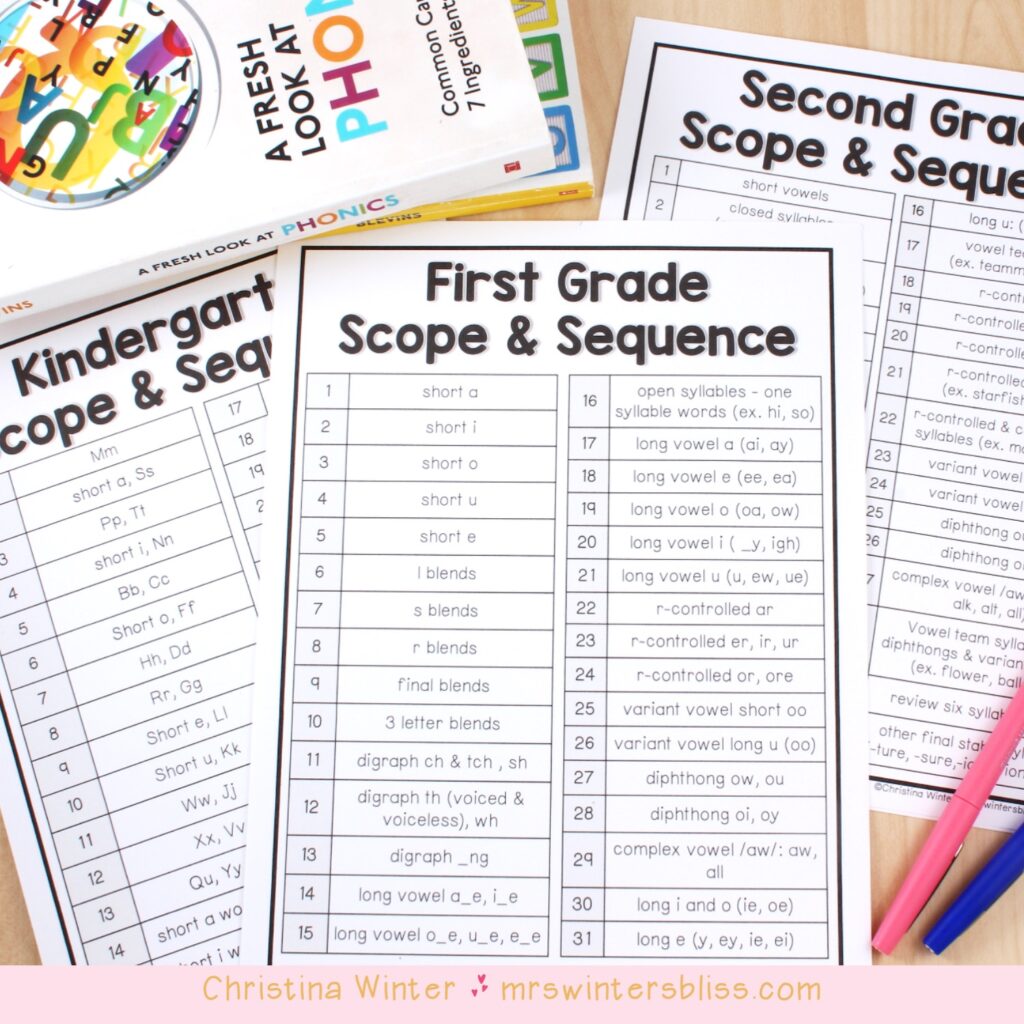
If your school does not provide you with a systematic phonics scope and sequence, you can download one in this post A Science of Reading-Aligned Phonics Scope and Sequence for K-2.
Once you have a scope and sequence to serve as your roadmap, you then decide which graphemes you will teach for each phoneme.
What Graphemes Should You Teach First?
There are 44 phonemes and 250 different graphemes (!) in the English language. Why are there so many graphemes? Because there are numerous graphemes that can represent a single phoneme. For example, the /ā/ sound can be represented by the graphemes ai, ay, ey, ei, eigh, or a-e.
But don’t worry, you do not need to teach your students all 250 graphemes! That would be far too much! Instead, you teach your students the graphemes that are used most frequently.
To help you know which graphemes most frequently represent each phoneme, I am happy to share this Grapheme Frequency Chart download. These are the graphemes that you will find included on my sound wall.
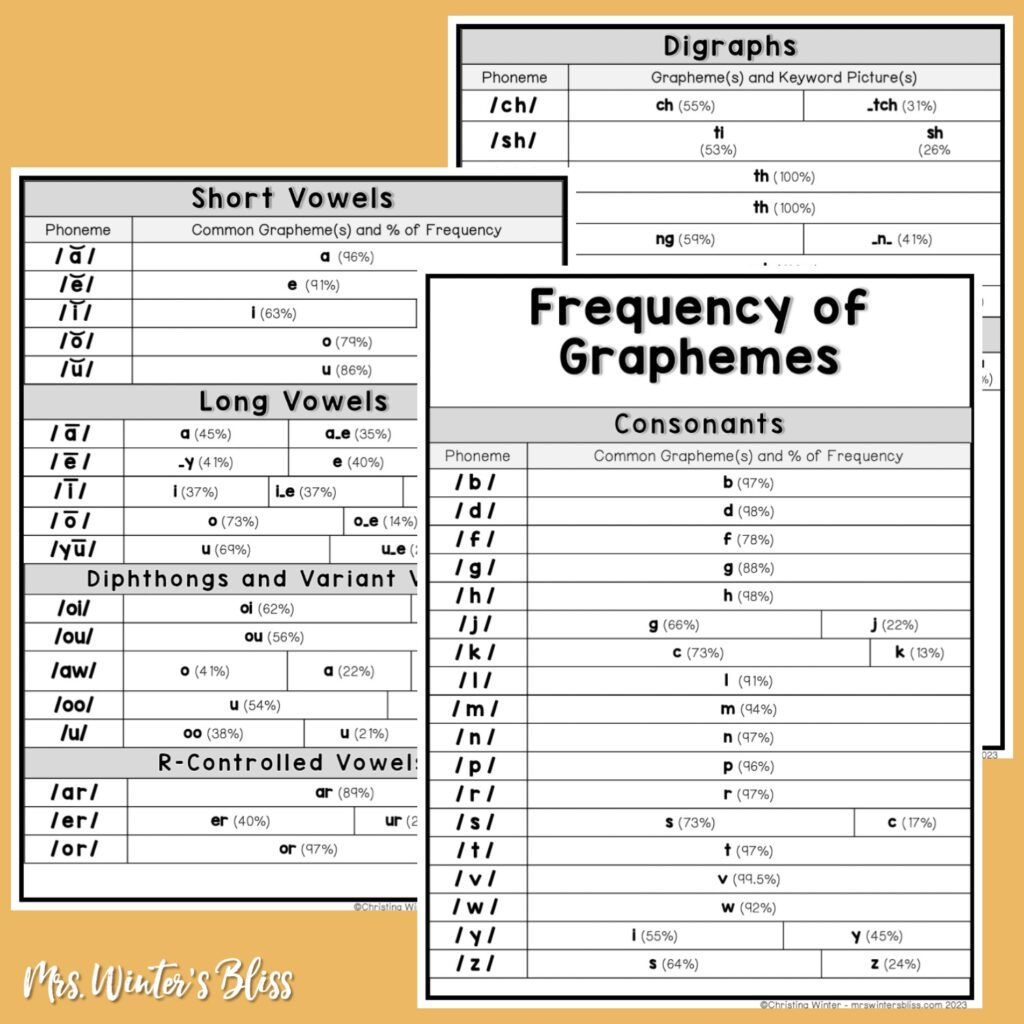
If you are looking for information about the frequency of common and less common graphemes this Phonics Rule Guidebook is for you. It is a research-based resource that will build your knowledge of phonics spelling pattern generalizations.
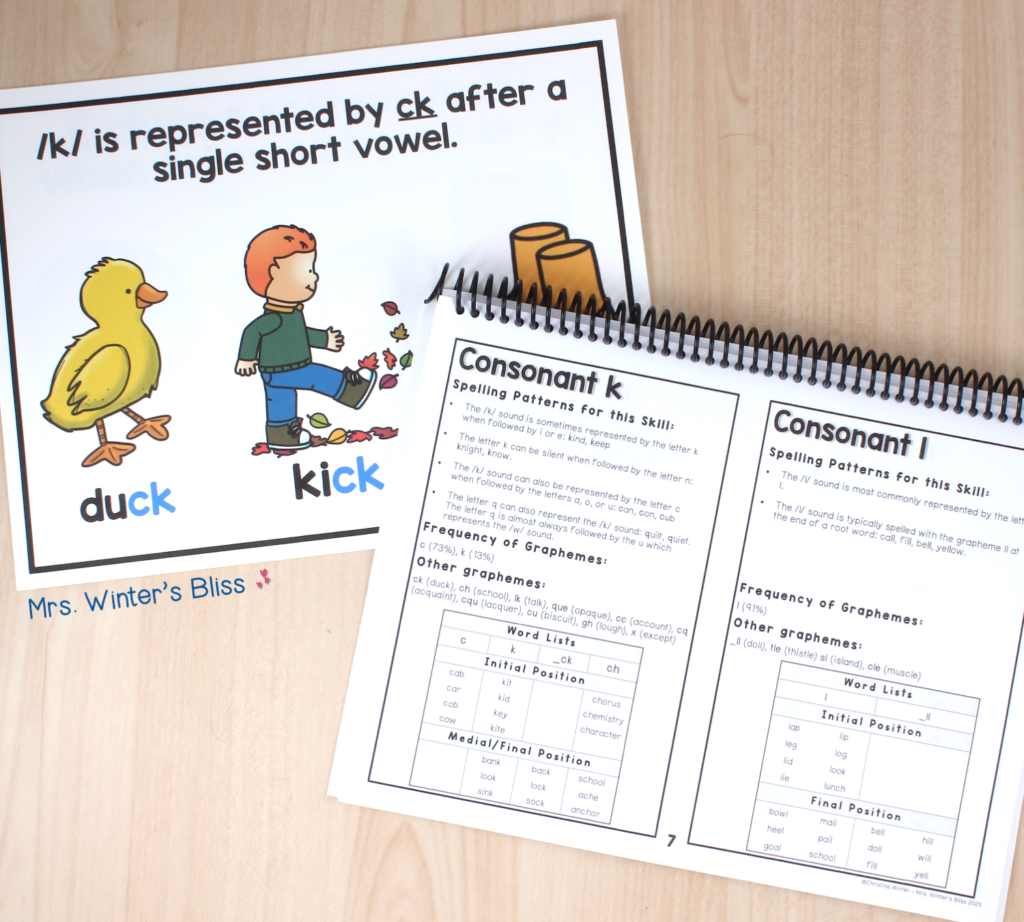
The guidebook is divided up by phoneme (sound). Each phoneme information page includes:
💕 Spelling pattern generalizations
💕 The frequency of common graphemes
💕 Other less frequently used graphemes
💕 A sample word list
I hope the information and resources I shared here today will help you to effectively and confidently teach your students phoneme-grapheme correspondence. Be on the lookout for my next post where I’ll share more activities you can do to help students master letter-sound relationships.
– SHOP THIS POST –
-
 Science of Sound Walls Mini Course
Science of Sound Walls Mini Course -
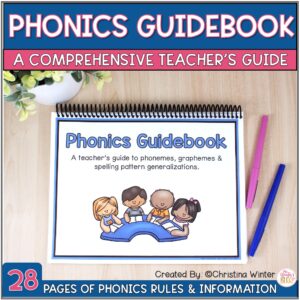 Phonics Guidebook – Phonics Rules and Teaching PostersEarn 0 Reward Points
Phonics Guidebook – Phonics Rules and Teaching PostersEarn 0 Reward Points
$14.00Rated 4.78 out of 5 based on 9 customer ratings -
Sale Product on sale
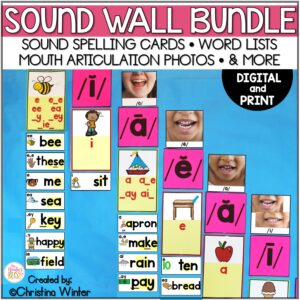 Phoneme Sound Wall with Mouth Articulation Photos – science of reading alignedEarn 0 Reward Points
Phoneme Sound Wall with Mouth Articulation Photos – science of reading alignedEarn 0 Reward Points$31.50Original price was: $31.50.$28.00Current price is: $28.00.Rated 5.00 out of 5 based on 21 customer ratings









